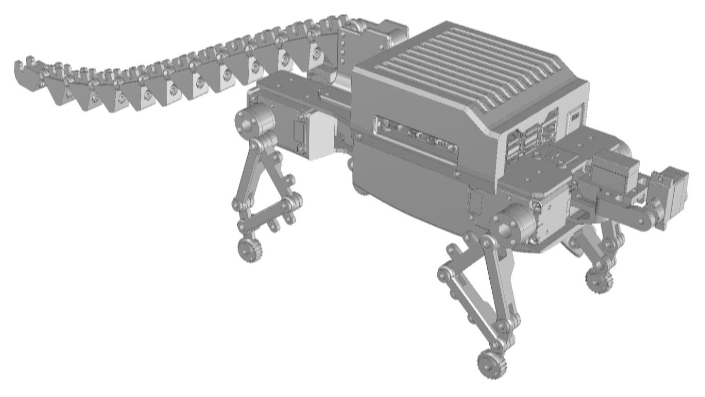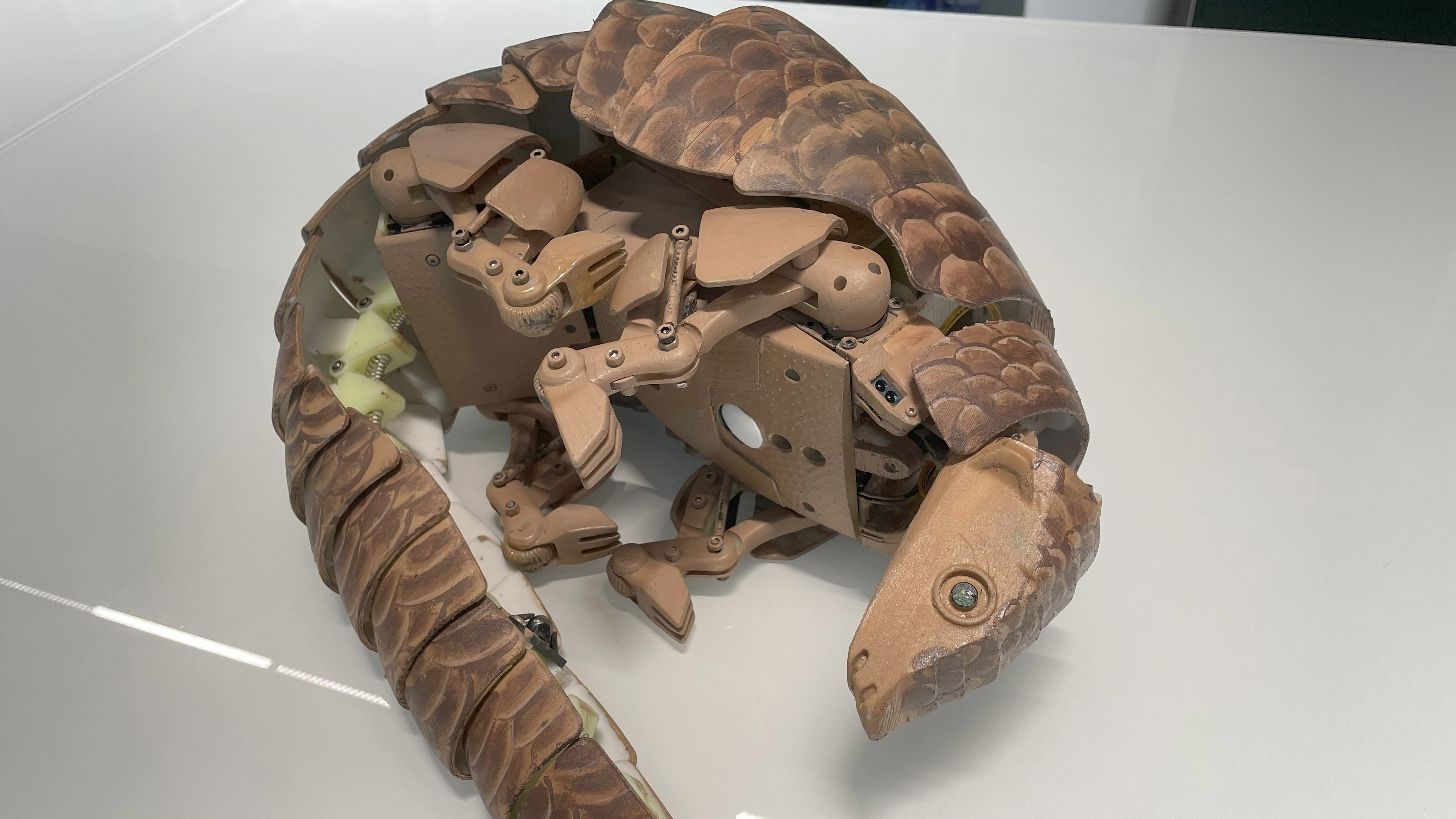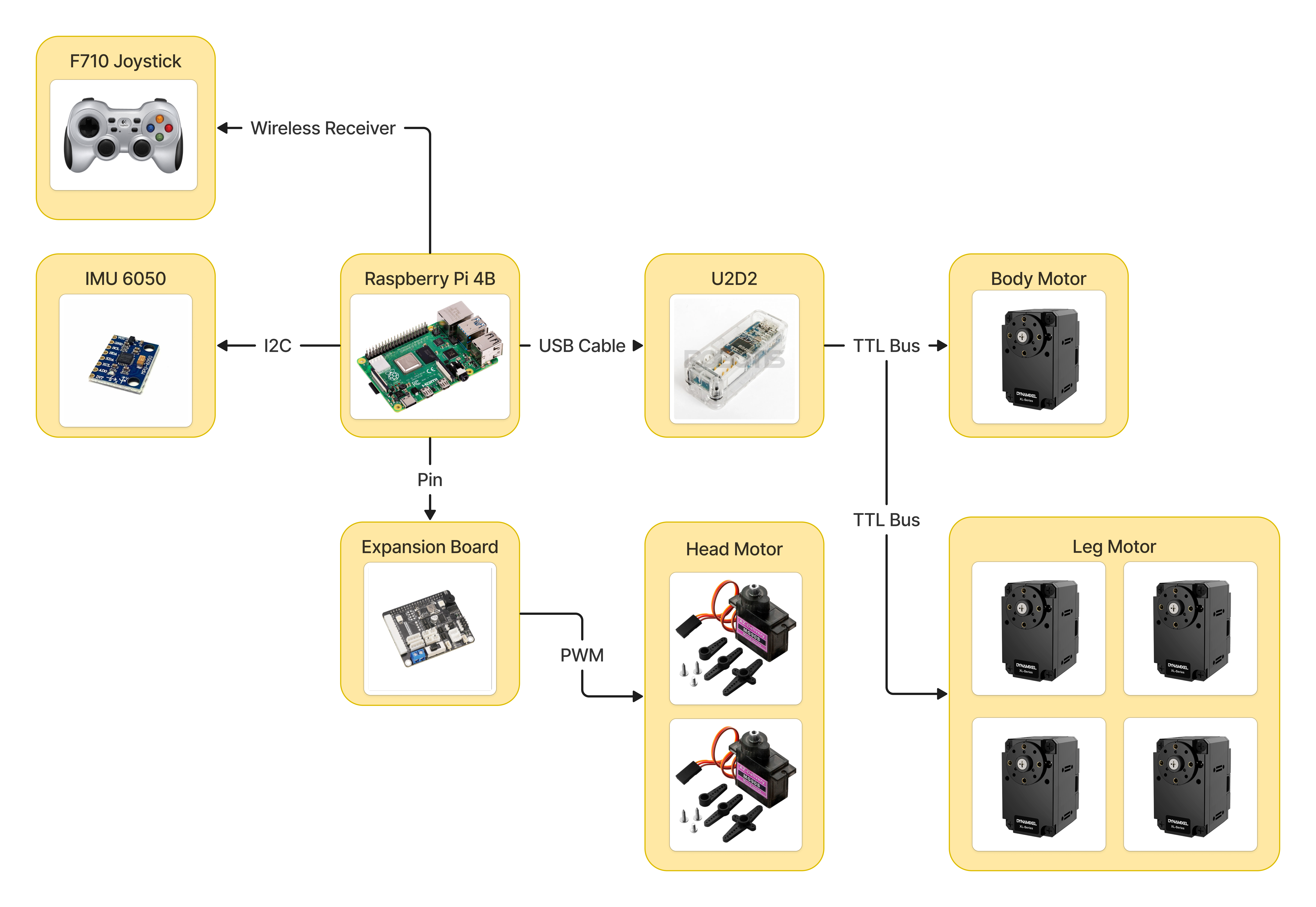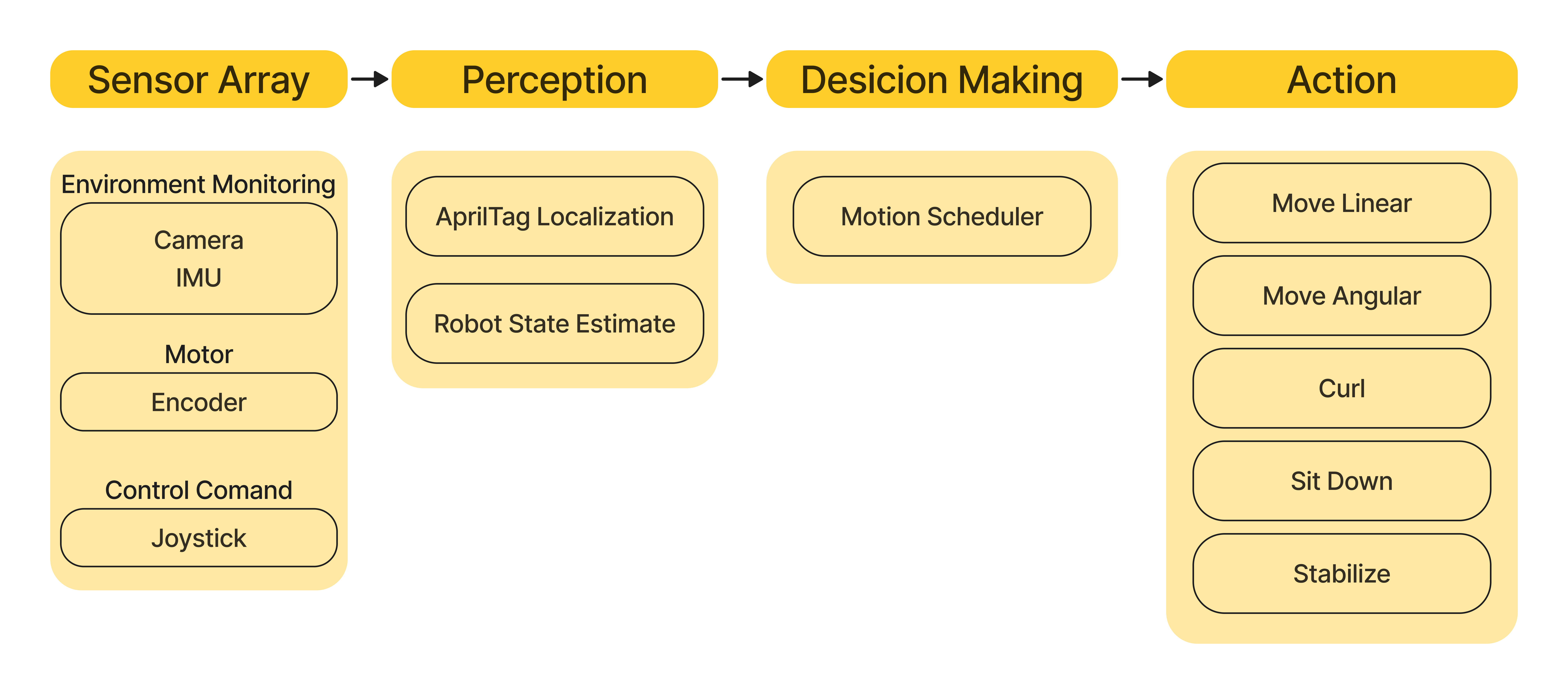Bio-Inspired Robot: Pangolin
This project integrates biomimetics, software architecture, and control systems to teach students how to use the ROS2 robot operating system for modular system design. It aims to advance hands-on learning and educational tools, providing students with insights into quadruped robot applications.
Mechanical Design
We designed a two-stage quadruped robot base with a standardized chassis housing batteries and electronic control systems. The base uses seven servo motors for leg movement, head rotation, and body actuation. Its modular design allows users to easily change drive mechanisms without altering the chassis structure.
A forward underactuated leg mechanism was created using linkage combinations. This design keeps legs vertical when standing, maximizing protection, provides a cushioning effect when the robot rights itself after rolling over, and uses a swinging motion for walking.


Electrical Hardware Architecture
The hardware architecture integrates signals from an IMU and a Joystick, routing this information to a Raspberry Pi. This setup enables the activation and control of corresponding motor systems to achieve various intended actions such as head rotation, leg movement, and body bending.

Software Architecture
The software architecture utilizes ROS2 to modularize and separate various functional components, allowing them to operate independently. Data transmission is achieved through DDS, resulting in a highly scalable and easily maintainable architecture.
We conducted systematic research to propose gait design solutions suitable for the pangolin robot, ensuring stable and smooth movement. Inverse kinematics calculations determine the required angles for each motor, ensuring precise control for the designed gait patterns.

My Work
- Software Architecture: Architected the ROS2-based software system with modular nodes for motor control, sensor integration, and motion planning.
- Electrical System: Developed the complete electrical system and communication protocols between the Raspberry Pi and peripheral components.
- Motion Control: Implemented robot motion algorithms for walking gaits, rolling behavior, and self-righting capabilities.